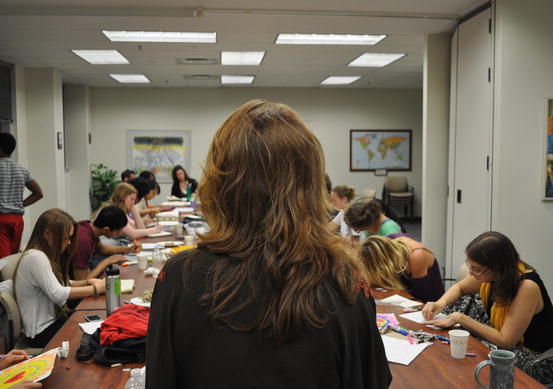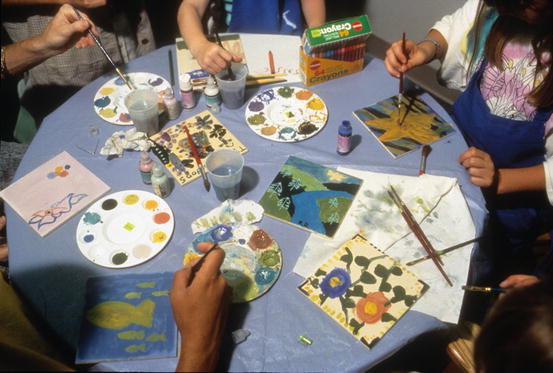Fig. 16.1
Mary Rockwood Lane doing guided imagery with nursing students at University of Florida College of Nursing
The way guided imagery is used today in healing centers is useful for any patient in the postsurgical cafe. Doing guided imagery is easier than writing about it or reading about it. Many people who use guided imagery divide the process into these parts:
1.
The first part is abdominal breathing.
2.
The second relaxation.
3.
The third deepening.
4.
The fourth is the subject of the imagery, the intent, and the content.
5.
The fifth is the return and grounding.
6.
The final step is an instruction for carrying something forward into your life.
Guided imagery is also used to create heart coherence. The authors teach patients to imagine the heart and gratitude in many guided imageries. Each part is important; as patients get better and better, they can shorten the introductions and closing somewhat if they wish. The relaxation takes place instantly after many practices.
16.3.2 Research Findings on Health Benefits of Guided Imagery
Helps physical symptoms
Promotes relaxation
Helps stress reduction
Decreases anxiety in preop and cancer situations
Decreases cortisol (stress hormone) levels
Increases positive outlook/mood
Improves depression
Relieves fatigue
Decreases pain, post-op and in chronic illnesses
Decreases the need for post-op analgesics
Enhances immune function
Improves comfort during radiotherapy for cancer patients
Makes the chemotherapy experience significantly more positive
Decreases symptoms of post-traumatic stress disorder for veterans
Improves abstinence rates for smoking cessation
Increases feelings of spiritual connectedness
16.4 How to Be an Artist for Psychosocial Healing
The second tool for psychosocial improvement of colorectal surgery is art. Art and healing is an advanced therapeutic method to enhance psychosocial healing. There are simple steps to making art for healing. Any patient can do it; they do it already. This advice about making art for psychosocial healing is derived from work with creativity, spirituality, and healthcare at University of Florida College of Nursing and College of Medicine (Fig. 16.2). As cofounder and codirector of Arts In Medicine University of Florida, the author developed ways to use creativity to heal patients with life-threatening illness (Fig. 16.3). These methods were the subject of peer-reviewed research. The process of making art to heal applies to psychosocial methods for colorectal care.


Fig. 16.2
Mary Rockwood Lane teaching nursing students how to make art with patients










